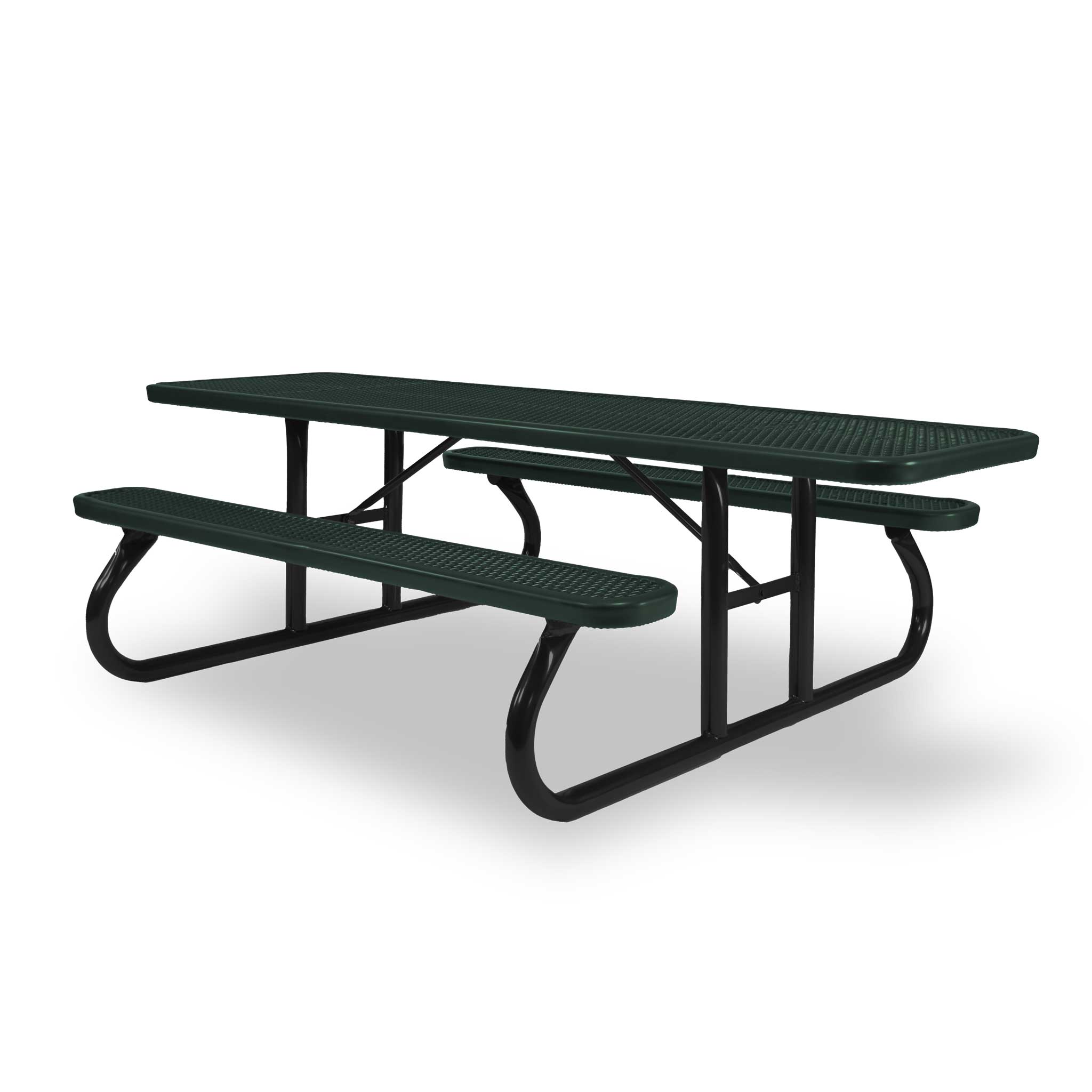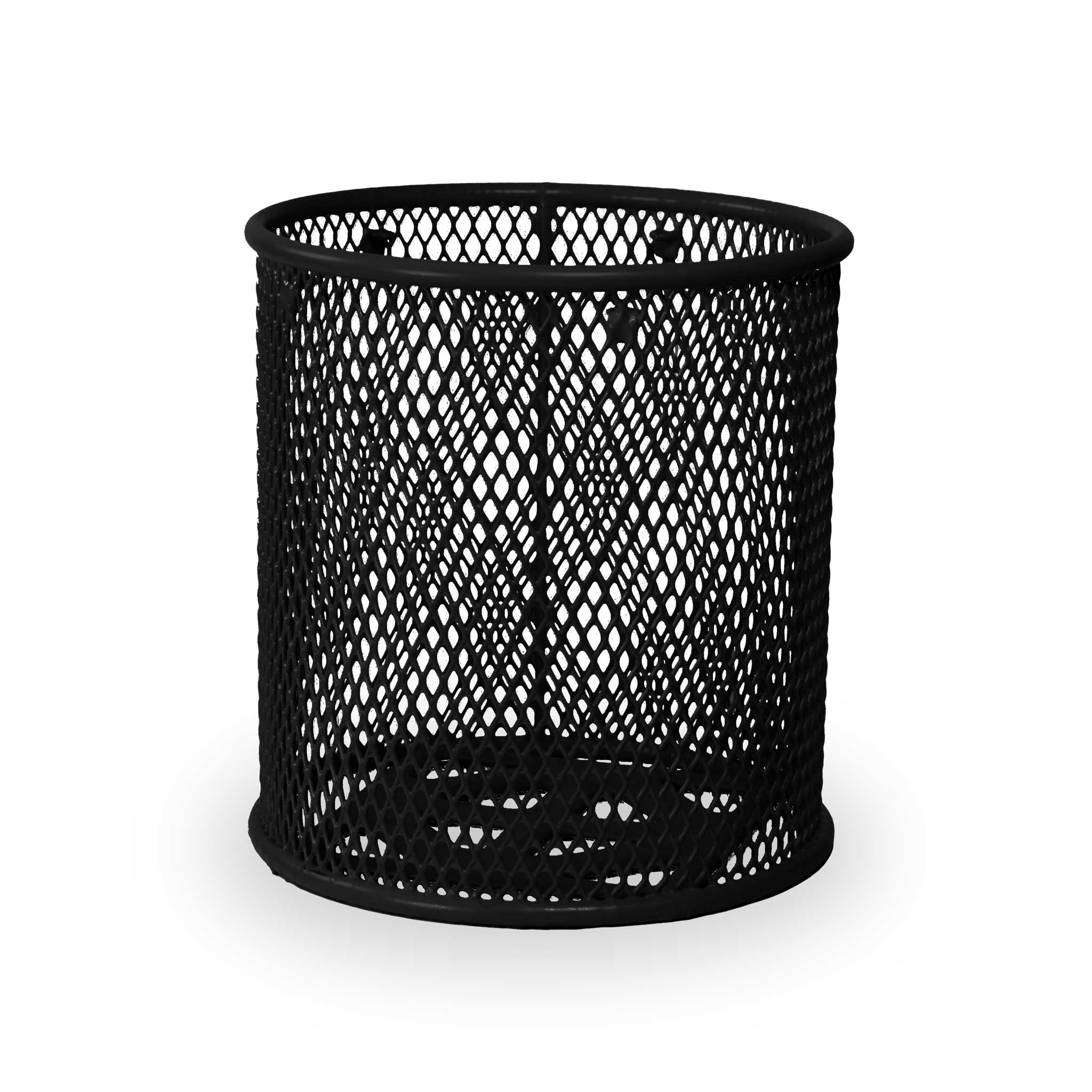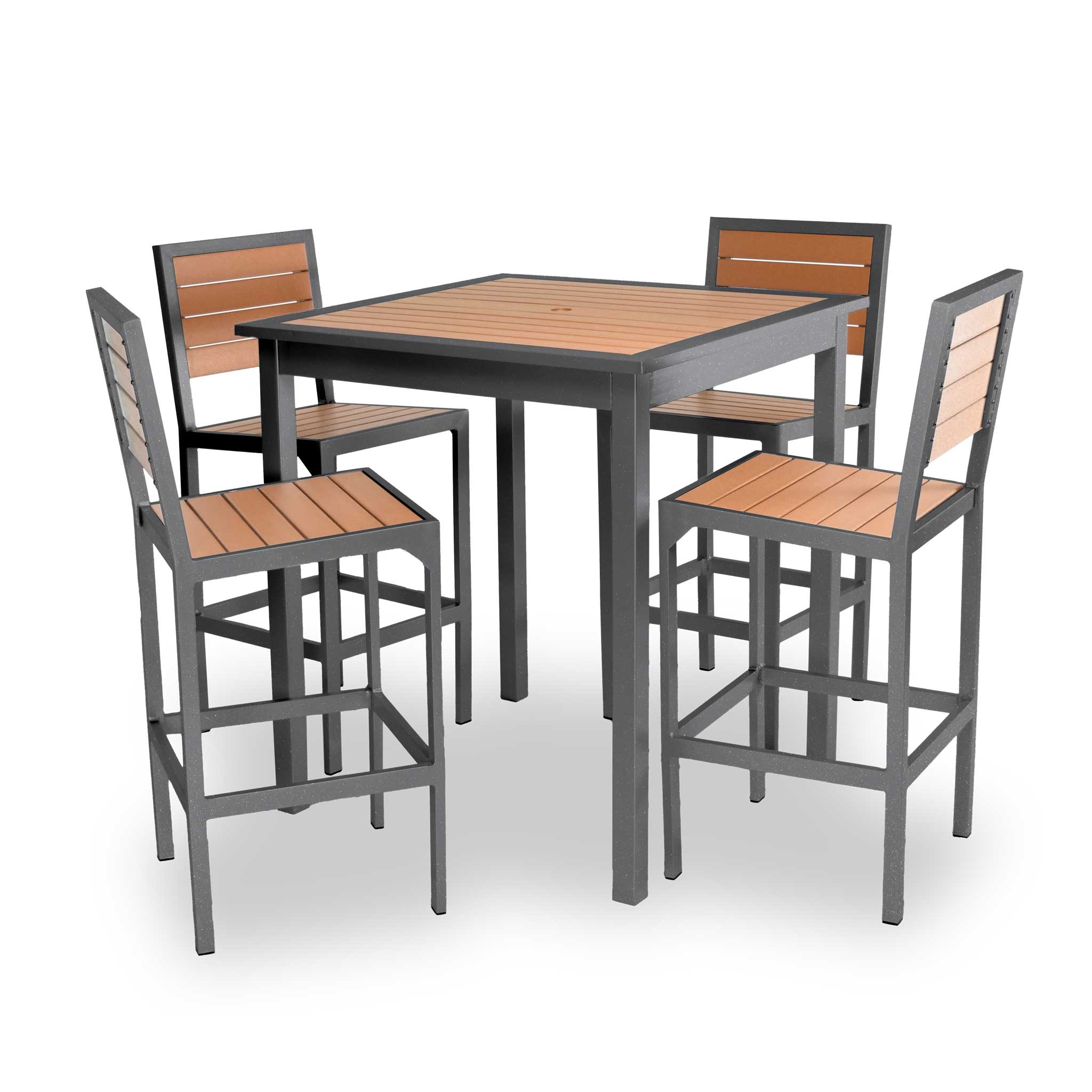How to Design a Public Park

Uncategorized | Mar 18, 2021
If you’re in charge of designing a community park, you’re responsible for making this recreational area fun, safe and accessible for everyone to enjoy. Consider the community residents’ needs before you begin your plan. You may also want to add decorative elements and functional site furnishings to attract a broad audience. This guide can help you figure out how to design a public park to create a memorable experience for all who visit.
Read the full article or jump to a specific section:
- Steps for Determining Your Park’s Design
- Top Design Trends for Public Parks
- Design Considerations for Public Parks
- Types of Park Site Furnishings
- Browse Park Products
Steps for Determining Your Park’s Design
Follow these tips as you plan your community park’s design.
1. Decide on the Perfect Park Location
The first step to designing your community park is to figure out where you’re going to build it. The client or town committee may already have a plot of land in mind, but if you have to choose between several possible locations, use these factors to pick out the best one.
- Safety: You’ll want to construct your park in an area with a low crime rate to make visitors comfortable coming anytime. Parents should feel safe bringing their kids to the playground, and older adults should feel secure as they walk on the park’s pedestrian paths.
- Accessibility: The park’s site should be wheelchair-accessible, providing a safe and fun environment for all people to enjoy. Adding amenities can foster a greater sense of community. It should also be close enough to populated neighborhoods that people can travel there via bike, car or public transportation. More people will use it if you make it easy for them to get there and take advantage of all the amenities.
- Character: People usually come to the park to spend time in nature, but other decorative and historical features might also draw them into it. You might want to build it near a historic location or a beloved part of town to reach a broad audience. Use the surrounding area’s charming character and history to make your park more attractive to local guests.
Most urban planners develop new parks on lands that planning committees have designated as safe and accessible for guests and accommodating for the environment. The land might be unused or part of public property, like on school grounds. In any case, it’s best to build the park in a way that serves the community well.
2. Research the Market and Community

Your recreational space should meet the community’s needs if you want a large group of people to visit your park. Consider the local community’s demographics, whether there’s a considerable population of children or mostly older adults. If you’re planning to build the park near a school, it should be safe and engaging for children to use. You’ll also want to include features that attract older adults if there’s a senior center or apartment complex nearby.
Research your community and find out which recreational activities are the most popular for your target demographic. You should also find out which park specifications, if any, don’t meet the public’s needs. As you collect this information, you’ll have a better idea of what features you’ll need to include in your design.
3. Get the Community Involved
You might consider involving the local community’s prominent members to find out how to meet their needs best. These residents will help you discover your proposed plans’ strengths and weaknesses to determine how the overall population will respond. The following types of people should be on your side as you begin planning, so you can get their approval for your park design:
- Members of local community organizations
- Parent-teacher organizations
- Public officials
- Citizen advisory groups or boards
- Civic parks and recreation departments
- Schools and education facilities
- Day care and preschool centers
- Community service organizations
4. Find Ways to Work With the Existing Landscaping and Architecture

The terrain and buildings surrounding the property where you want to build your park affect your design. Instead of spending extra time and money trying to fill in the ground to make it level, it often makes more sense to work with the natural landscaping. The area’s hills and valleys can create a unique look and accommodate some of the recreational activities you want to feature in your plan.
Besides the terrain, it also helps to think about the sun’s pattern and how it’ll affect your park’s equipment and visitors’ comfort. Provide shade around the playground area and on the walking path by planting trees. You can also use artificial screening or overhead shelters to relieve your guests from the sun’s heat. Having enough shade in your park is critical for protecting young people who could become sunburned or harmed from a hot slide or swing.
5. Include Plenty of Recreational Activities
As you consider your community park’s design, think about what activities and amenities you’ll include for people of all ages and abilities to enjoy. The more activities you have available in your park, the more people can use it. Make designated spaces for sports fields, walking paths, grilling areas and playgrounds. You can also include plenty of room for decorative elements like fountains and statues for people to explore. Remember to include restrooms in your park’s design, so guests can enjoy their stay for a long time.
6. Select Appropriate Playground Equipment
Your playground structures should be able to accommodate specific age groups. When deciding what playground equipment to include in your design, think about what activities toddlers, preschoolers, young children, preteens and teenagers will enjoy. The playground should have safe, educational elements for younger kids and attractive landscaping and feature for older kids. Consider including equipment that promotes group activities and encourages kids to play with their friends. Besides being age-appropriate, the equipment should also be durable enough to hold up to extreme weather conditions and enhance your community park’s overall aesthetic.
7. Add the Finishing Touches to Make Your Park More Functional

Though decorative and recreational elements are necessary, you’ll also want to include functional site furnishings. These features improve the visitor experience and make patrons more likely to return to your park in the future. Imagine which amenities will make your recreational areas more comfortable and enjoyable for guests. Put site furnishings in places that accommodate each function. For example, place trash receptacles near your outdoor grilling and eating areas, so visitors can throw out their trash conveniently.
8. Incorporate Lighting Throughout the Park’s Design
Lighting is another critical component in your community park’s design, especially in the fall when the sun sets earlier. You’ll have to include artificial lighting throughout the area, so visitors can feel safe as they walk around in the dark. Consider using lampposts or other light fixtures with LED bulbs to increase your park’s energy efficiency.
When figuring out where to put lighting, you might want to install the most number of lampposts in high-activity areas, such as playgrounds and pedestrian walking paths. Have a decent amount of illumination on decorative features such as artwork or fountains. Deter your guests from visiting areas that are unsafe or inappropriate at night by only putting a few lampposts there.
Top Design Trends for Public Parks
As you plan your public park’s appearance and function, explore some current design trends for parks and recreation.
1. Sustainability
Eco-friendliness matters to future generations, so they’ll be more attracted to your park if you provide a space that benefits the environment. If you’re creating a community park that encourages health and wellness, you should also design it with sustainable materials that promote fresh air and clean water. The components you use should nurture the surrounding environment and the greenery within the park.
Consider installing bike racks and loops to encourage visitors to bike to the park, instead of driving there. You may also want to install recycling bins so your visitors can properly dispose of their plastic, aluminum or glass food and beverage containers. If you’d like to add a water sprayer to your design, consider investing in a recirculating system to save water.

2. Technology
Park designers have begun combining technology with outdoor, natural beauty. Having technological features around your park can enhance your guests’ experience and increase your park’s efficiency. A mobile app can highlight your outdoor fitness equipment and even offer workout plans to your visitors. You may also want to use smart technology, such as motion-sensor lights, benches with solar-powered USB charging docks and interactive kiosks that provide information and weather updates. Provide charging stations near high-traffic areas for visitors to charge their phones.
3. Animal-Friendly Areas
Since many public places forbid pets from visiting, dog lovers are looking for canine-friendly recreational areas. You can incorporate turf in your animal-friendly park to provide a safe place for people and animals to walk and play. This low-maintenance material is easy to clean and doesn’t retain germs. It also doesn’t need pesticides that could be harmful to animals.
Besides turf, you’ll want to include pet waste bag dispensers around your park for pet parents to clean up after their four-legged friends. Consider including obstacle courses that people can complete with their pets. The more activities you include for pets and their humans to enjoy, the more likely they’ll return.

4. Accessibility
Park designers prioritize providing a safe, enjoyable place for all people. Your park’s design should aim to create an environment that attracts a broad demographic and encourages visitors to come back often. By including accessible elements, you’re telling the community that everyone is welcome.
Think about which features provide entertainment and safety for all children, including those who use wheelchairs or get easily overstimulated. Besides having a flat, smooth surface that’s easy to run or move on, you can also create a relaxing area where children can calm down if they feel overwhelmed.
5. Customization
People who visit your park are looking for reasons your recreational space’s design is different from the rest. Be sure to give them a memorable experience, so they’ll want to revisit your park soon. Consider adding your creative flair to your park’s blueprints to make your recreational space unique.
Set your park apart from others with custom design themes, colors and equipment. You’ll also want to tailor your shading structures’ color, style, shape and size to match the rest of your park’s design. Choose elements that point to the local community’s charming character.
Design Considerations for Public Parks
Consider the following factors as you design your community park.
1. The Park’s Purpose
A community park should provide residents a place to enjoy the outdoors and spend time with their loved ones. Think about how your public space will enhance the general population’s well-being. Choose recreational areas and design elements that attract a broad demographic of visitors. Whether you want to create a safe site for kids to play, a relaxing environment for older adults or a combination of the two, you’ll want to have all those in mind as you plan the design of your public park.
2. Future Changes in the Community
The park you design should last for decades before you’ll need to renovate or redesign it. Think about how the community will change in that time to accommodate people’s future needs. Young children will eventually grow up and start having children of their own. Older adults might retire in other communities and make the demographic skew much younger. Make sure you continue to find ways to accommodate current design trends in your blueprints, so it doesn’t become outdated or even unsatisfactory to people over time.
3. Your Role as the Architect or Planner
Whether you’re an architect or an urban planner, your job is to create a safe, accessible space for all people while complying with local, state and federal building codes. You must be creative when designing your public park. Even though you want to follow all the rules to prevent injuries over time, you also should make your recreational space aesthetically pleasing and attractive to the local community. When you find that balance between aesthetics and function, your guests will return to your park more often.
Types of Public Park Site Furnishings
Outdoor site furnishings and amenities are critical for your public park’s design because they make it more comfortable and accessible for visitors. As you design your recreational space, explore the following products that we offer at Wabash Valley Site Furnishings.
1. Outdoor Benches

Your park should have benches for visitors to sit comfortably. Durable outdoor benches provide older couples a place to stretch after walking or young parents a place to watch their kids in the playground. People are also more likely to enjoy the fresh air when they know there’s available seating for them to take a break from the heat.
Aside from our standard outdoor benches, we also provide the following types of seating and accessories.
- Memorial bench: Include memorial benches with customizable plaques in your design to honor generous donors or deceased community members.
- Swing bench seat: For unique, fun seating, you can get swing benches that connect to posts and swing back and forth. These durable benches can withstand wear and weather damage.
- Bench armrest: Most of our outdoor benches come with armrests, but you can install additional armrests in the bench’s center to give the people sitting in the middle a comfortable place to put their arms. This feature also provides each person a sense of personal space.
- Shelter: A shade over a seating area gives your visitors a break from the harsh UV rays from the sun. You can get this product by itself or find benches with shelters attached to them.
2. Picnic Tables
You can also provide your guests a place to sit with our high-quality picnic tables. Consider installing these seating areas where you’d like to set up grilling stations. You might also want to put them close to the playground or splash park, so children can eat lunch with their families after playing. It’s helpful to get an umbrella for your picnic table, so your guests can avoid UV rays and feel a sense of privacy.
We also offer these unique seating options.
- Game tables: Our outdoor game tables provide a comfortable, fun place to play chess, checkers or any board game your guests would like to bring to the park. Choose from several vibrant colors to attract potential players and match your overall design.
- Children’s tables: Our children’s tables are the right height for all the little ones who will visit your park. Consider putting these tables near playgrounds so kids can eat or play after they’ve finished running around. Some of our tables also come with alphabet lettering to encourage learning as children sit.
- ADA-accessible picnic tables: Some of our tables offer single-sided seating to provide space for wheelchair users to sit comfortably.
3. Dining Sets

Picnic tables usually offer attached seating, but if you want to customize your design even further, consider getting outdoor dining sets for your public park. These tables and chairs provide a comfortable place for visitors to enjoy their meals near the grilling station. Choose from various colors, sizes and styles to complement your public park’s design.
Explore some of the dining set components we offer.
- Chairs: Comfortable seating around your dining set provides a memorable experience for all who visit your public park. We offer various color, style and size options to accommodate all the people eating in your recreational area.
- Tables: Besides getting dining tables with attached seating, you can also find stand-alone tables like pedestal or bar tables to mix and match your chairs. We offer metal tables to withstand all the weather conditions in your local area while providing a unique design.
- Drink rails: Consider getting an outdoor drink rail with a back lip that catches spills. You can put this decorative, functional element anywhere you think your patrons will be drinking.
4. Trash Receptacles
Trash receptacles help keep your public park clean and safe for the people in your community. To prevent litter buildup, make sure you include plenty of cans throughout every area of the park. Functional, long-lasting trash receptacles keep pests and insects away from the places where your visitors will gather.
Along with our collection of typical outdoor trash receptacles, here are the other types and accessories we feature on our site.
- Trash receptacles with ashtrays: Give your visitors who smoke a place to extinguish and throw out their cigarettes instead of leaving them on the ground. The ashtray goes on top of the trash receptacle, with room to throw out regular trash underneath it.
- Recycle bins: To create a sustainable, eco-friendly park, consider installing recycle bins near your trash receptacles so visitors can distinguish where to put their food and beverage waste.
- Pole-mounted trash receptacles: A trash can that mounts on a post provides a creative, space-saving place to dispose of waste. You may want to mount it on your lampposts or somewhere visible to passersby.
- Trash receptacle lids: Our trash receptacles usually come with covers, but if you want a unique design, you might want to look at some of our other can coverings. Dome lids can keep out large pests and control the garbage’s odor. Flat-top covers offer a sleek design and provide a convenient opening for disposing of trash. Meanwhile, flare-top trash receptacles can catch trash that may have missed the opening, cutting down on litter.
5. Accessories
You’ll need to include some accessories that serve behind the scenes of your park’s overall design. Your visitors might only notice these components when they need to use them. Here are some of the outdoor accessories we offer for a public park.
- Ash urn: A stand-alone cigarette ash urn gives visitors who smoke a place to throw out their cigarettes. The maintenance staff can easily clean and transport portable ash urns to keep your park in excellent condition.
- Bike rack: Having a bike rack in your public park promotes health, wellness and physical fitness. It also encourages patrons to take their bikes to the park instead of driving their cars. We offer standard bike racks and bike loops in customizable colors and capacities.
- Covered grill: Your grilling area should have a low-maintenance, easy-to-clean grill so your visitors can have a picnic or private party outdoors.
- Hand sanitizing station: A mounted hand sanitizing station allows you to prevent the spread of germs among your park’s visitors. Consider putting them near the playground or dining areas where people are more likely to interact.
- Tree grates: Putting tree grates under the trees you’ve planted provides a functional water draining system to control the moisture around them. Choose a size and shape that complement your park’s overall design.

Browse Our Site Furnishings to Help Design Your Park
Wabash Valley Site Furnishings offers durable, aesthetically pleasing solutions for your parks and recreation projects. We offer high-quality, low-maintenance products that are sure to withstand outdoor weather conditions. Consider purchasing our items in bulk to save money on all the products you need to design your public park. Browse through our collection of park site furnishings and amenities, and feel free to contact us online if you have any questions about creating the best public park design for your neighborhood.
Categories
Recent Posts
Sign up for our newsletter
Share this post:




